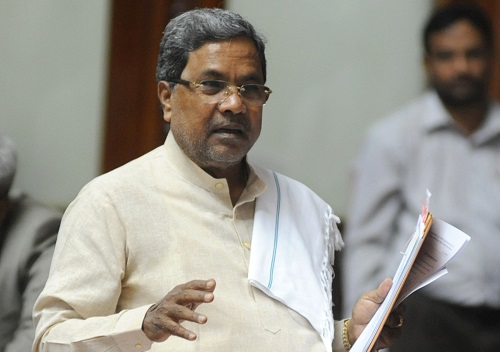Budget 2022- 23 Recommendations - Jimmy Patel, Quantum AMC

Follow us Now on Telegram ! Get daily 10 - 12 important updates on Business, Finance and Investment. Join our Telegram Channel
1. Introduce Debt Linked Savings Scheme (DLSS) to deepen the Indian Bond Market
- Minimum of 80 % of funds under the category of Debt Linked Savngs Scheme (DLSS) shall be invested in debentures and bonds of companies that are permissible under SEBI Regulations.
- DLSS should be introduced similar to Equity Linked Savings Scheme (ELSS) to generate potential returns for long term savings of retail investors into corporate bond marketswhich also helps boost the Indian Bond Markets.
- Investments upto ₹1,50,000 under DLSS be eligible for tax benefit and subject to a lock in period of 5 years i.e., similar to bank FDs. However, a separate limit for tax benefit would be ideal.
- DLSS may mobilize small investors to participate in bond markets at low costs and at a lower risk as compared to Equity markets.
2. Uniform Tax Treatment for Retirement / Pension Schemes of Mutual Funds and NPS
- Under Section 80CCD tax dxeduction for Investment in Retirement Benefit / Pension Schemes offered by Mutual Funds upto ₹150,000 should be allowed within the maximum limit of 1.5 lakhs with additional deduction for investment up to ₹ 50,000 under section 80CCD. Also, the net total of employer’s and employee contribution should be taken into account for the benefit of tax calculation under section 80CCD.
- Also recommend that CBDT, in consultation with SEBI, should NOTIFY the guidelines giving the framework for Mutual Funds to launch pension schemes for tax eligibility and norms adhering to it.
- Globally, market-linked retirement planning has been a boon for high-quality retirement savings. Investors will have many choices in scheme selection and flexibility.
3. Mutual Fund Units should be notified as ‘Specified Long-Term Assets’ qualifying for exemption on Long-Term Capital Gains under Sec. 54 EC
- MF units that are redeemable after three years, wherein the underlying investments are in equity or debt of ‘infrastructure sub-sector’ as specified by RBI, should also be included in the list of the specified long-term assets under Sec. 54EC.
- The investment shall have a lock-in period of three years to be eligible for exemption under Sec. 54EC as well as providing the option equity, or debt schemes based on each individual’s goals.
- Long term capital gains could be saved by the investor as it could be reinvested in other MF schemes along the same lines for sale of transactions of immovable property.
4. Taxation on Listed Debt Securities and Debt Mutual Funds to be aligned
- There needs to be an aligned holding period for long term capital gains between investment in listed debt securities and debt mutual fund schemes.
- Investing in non-equity-oriented schemes where 65% or more is invested in long term debt securities could bring the common platform and pave the way for direct investment as mentioned in the above point.
- Parity between direct investment in listed debt instruments and investment in debt-oriented mutual fund schemes is the need of the hour.
5. Definition of Equity Oriented Funds (EOF) to be revised to include Equity Oriented “Fund of Funds”
- “Equity Oriented Funds” (EOF) which invest predominantly, say 65% or more, in units of Equity Oriented Mutual Fund Schemes should be exempted from ‘tax on distributed income’ under section 115R. Also redemption of units in such schemes should be allowed same capital gains tax that is applicable to sale of listed equity securities / units of Equity Oriented Mutual Fund Schemes
- strong case for rationalization of taxation between Equity and Equity Oriented Fund of Funds. Reconsidering, FOFs investing 65% or more of their corpus in EOF should be reclassified as EOF’s.
6. Incentives for Economy Growth
Two key problem areas for the Indian economy have been falling discretionary spends and lack of private capex.
- Incentivising private capex in infrastructure creation must be a priority area. The 2003-2007 boom was led by strong uptick in private capex as well as infrastructure creation by private players. A similar boom can pull up the GDP growth as well as have a strong multiplier.
- Incomes have taken a significant hit due to the Covid virus and one expects the government to breach the gap caused by falling consumer spends. Direct fiscal support remains the best course of action followed by most international governments. So far, the fiscal response has been weak from the India government given the scale of the slowdown. One expects the Government to increase its fiscal response to stimulate demand either via direct income support of cut in taxes for most affected sectors.
7. Removal of Customs Duty on Gold: Reduce customs duty and provide a road map towards removing it completely
In Indian gold market, high customs duty only distorts markets further as the current differential between the Indian gold prices and international gold price has widened to 15.5% in total. The way the math works is 12.5% customs duty + 3% GST leads to 15.5%.
This is a significant differential and augurs well for illicit gold imports and further distort gold markets significantly. We have seen Indian physical gold markets trade at a discount almost persistently and reasons cited by the experts are lower demand and illicit imports at the root cause. Such interventionist policy making ensures that India will never be at the center of the global gold markets despite being the largest consumer and will continue to remain a price taker. Such distortions make it difficult to channelize the hoard of India’s gold savings into circulation and thereby integrate the gold market with other financial markets. For instance, the recent introduction of TCS also leads to price distortions in the gold market.
Historically, while the authorities have pursued policies to de-emphasize gold and to suppress demand for gold, the balance sheet of households showed more gold on the asset side.
The Committee on Capital Account Convertibility (CCAC) put forward some precise and action-oriented recommendations on the liberalization of the gold market. The CCAC stressed that it was essential to liberalize the policy on gold while simultaneously taking steps to develop a transparent and well-regulated market in gold, which would be integrated with other financial markets (China is moving in this direction). In its view, the main ingredients of the change in the policy on gold should be:
- Removal of restrictions on import and exports of gold,
- Development of gold-related financial instruments,
- Development of markets for physical and financial gold,
- Encouragement of banks and non-banks to participate in the gold market.
The CCAC suggested mobilization of private sector gold for external adjustment and to remove external constraints. Removal of tariffs and freeing the market are the prerequisites for this development.
What the Indian gold markets need for it to influence global gold markets:
- A gradual move towards a free market, which allows imports and exports of gold to be made freely or with minimal restrictions. Get domestic prices on level with international prices so as to bring about an efficient two-way transfer of the commodity or currency. This will help lay down some basic rules in order to find the true price of that commodity or currency. For this to become successful, additional taxes, duties and levies need to be abolished.
- There is a huge amount of accumulated wealth of gold in India. The government should try to use these savings for the development of the nation by mobilizing and channelizing the same to productive uses. Price distortions will only push further any real chances of bringing gold in circulation.
- If the motive is to generate revenues, there are many other ways post the market development. The government could apply an annual fee on foreign bullion players trading in Indian markets and raise revenues through the fees charged on them. The customs duty collected helps reduces the deficit by a negligible proportion. Hence, the government should focus on implementation of reforms and look at the bigger picture to develop the gold market as it truly possesses the potential of becoming the gold trading capital of the world.
We agree that these reforms cannot be achieved overnight. However, these are essential steps towards strengthening our gold market which would enable us to further cement our position as world leaders in the global gold market.
8. Need for parity in tax treatment in respect of Intra-scheme Switching of Units under MF Schemes
- A new sub-section under Section 47 of the Income Tax Act, 1961 can be inserted, so that Switching of Units from Regular Plan to Direct Plan or vice-versa; and Growth Option to Dividend Option or vice-versa, within the SAME scheme of a mutual fund are not regarded as “Transfer” and hence, shall not be charged to capital gains.
9. Request to permit Insurance Companies to outsource the Fund Management activities to SEBI Registered MF AMCs
- In my view all IRDA-registered Insurance companies should be permitted to outsource the Fund Management activities to SEBI Registered Mutual Fund Asset Management Companies (AMCs) and the AMCs should be permitted to provide Fund Management / Asset Management services to the Insurance companies by appropriate amendments to relevant SEBI & IRDA Regulations. This will help better development of resources.
Above views are of the author and not of the website kindly read disclaimer












 320-x-100_uti_gold.jpg" alt="Advertisement">
320-x-100_uti_gold.jpg" alt="Advertisement">








